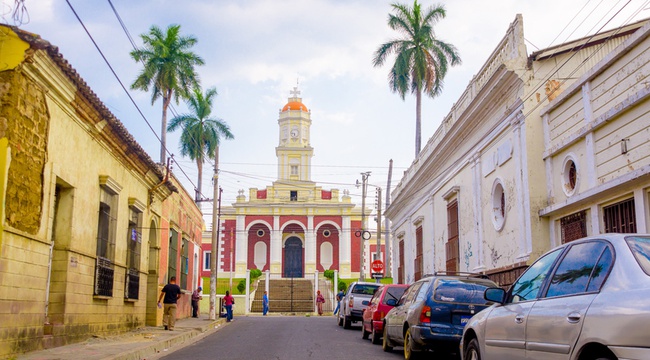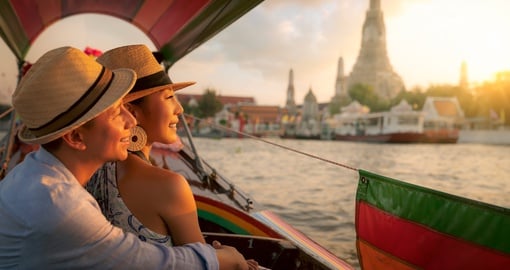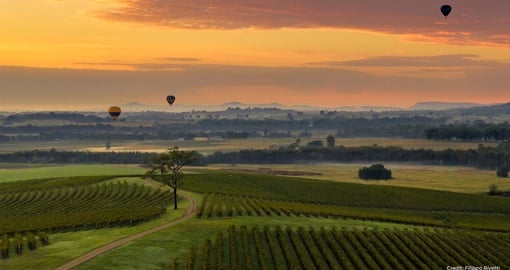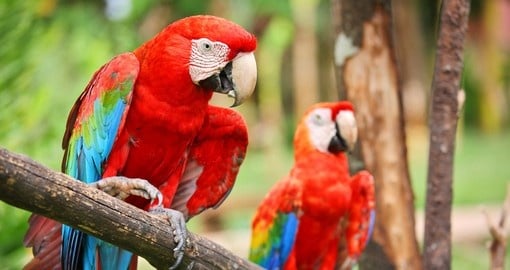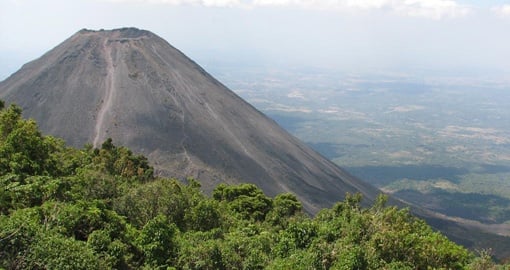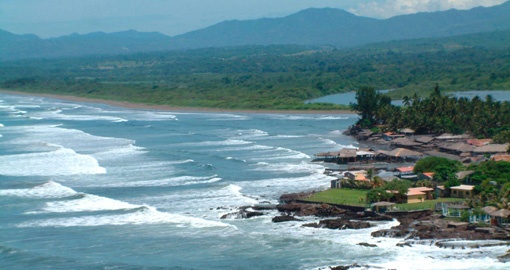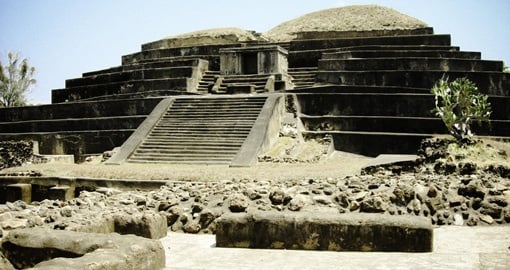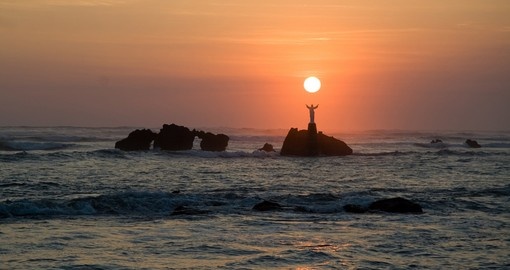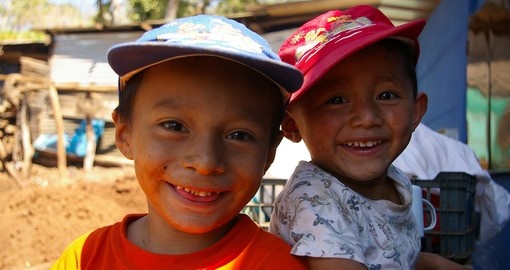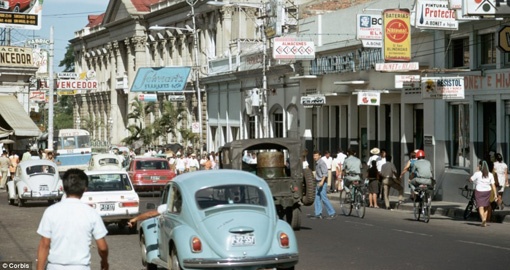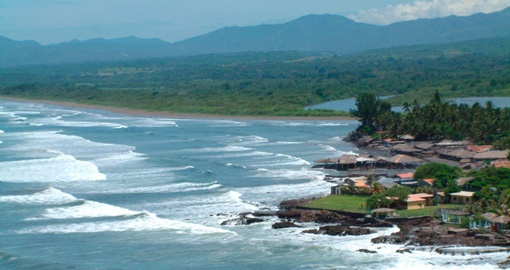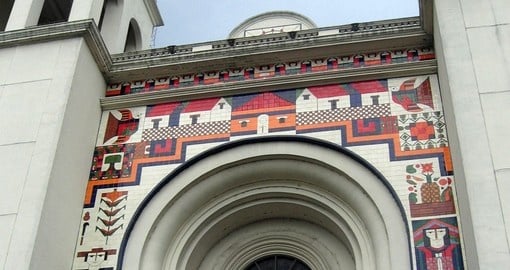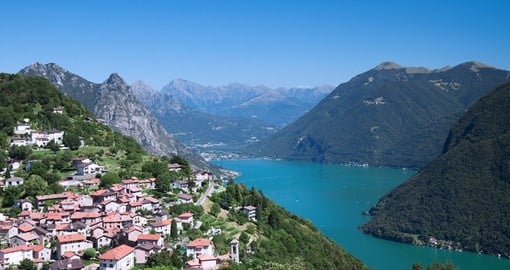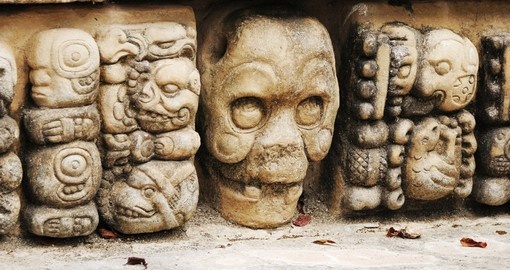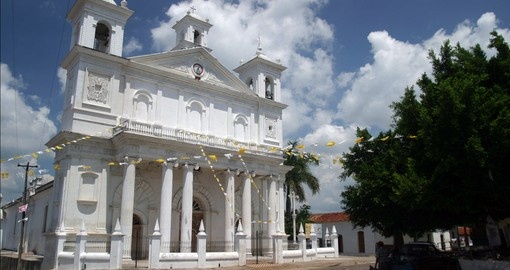Essential Facts
Currency
El Salvador uses the US dollar (USD). Most shops and restaurants in the major cities, particularly shopping centres, accept major credit cards, but you will be required to display an ID card when you pay with a credit card in most stores. It is recommended to have cash on hand in smaller towns and more rural areas as credit cards may not always be accepted. ATMs are also easily accessible throughout the country in the larger cities.
Language
The official language of El Salvador is Salvadoran Spanish, a unique Spanish dialect. Salvadoran Caliche is also common, incorporating Indigenous words into colloquial Spanish. The smaller groups of Indigenous people throughout the country also speak local dialects such as Nahuatl, Lenca, Pipil, Q’eqchi, and Cacaopera. English is not widely spoken throughout the country, but can be found in more touristy areas. Learning a bit of Spanish will be helpful and welcomed by locals.
Best Time to Go
El Salvador is a destination that you can visit all year round, although the best time to visit is during the dry season, November to April, as the humidity is not as intense and there is less chance of a downpour. March and April are typically the hottest months. In winter, May to October, there is a greater chance of rain and higher humidity.
Climate
El Salvador has a tropical climate with two distinct seasons: summer (dry season) and winter (wet season). The winter season, May to October, experiences the highest humidity and the most rainfall, typically in the form of heavy afternoon thunderstorms. The summer season, November to April, is hot, dry, and hazy. Temperatures vary little between the seasons. The Pacific lowlands are the hottest region, with an annual average temperature of 25°C—29°C/77°F–84°F. The central plateau (San Salvador) experiences highs of 38°C/100°F and lows of 6°C/43°F. The mountain region is the coolest, with temperatures ranging from 12°C–23°C/53–73°F with lows that can reach almost 0°C.
Ideal Traveller
El Salvador is a great destination for the more adventurous traveller as the tourist industry is not as extensively built as in some of its neighbouring countries. However, it has plenty to offer many types of travellers. As a small country, it’s easy to tour around and see the main tourist areas. Historians and culture lovers will love the many Maya ruins, colonial towns, and incredible cuisine that can be found throughout the country. Wildlife enthusiasts, nature lovers, hikers and photographers will enjoy exploring El Imposible Park, Volcano Park, and the incredible Montecristo National Park. Surfers and beach lovers will be amazed with all the incredible beaches and surf breaks this small country has to offer.
Getting There From North America
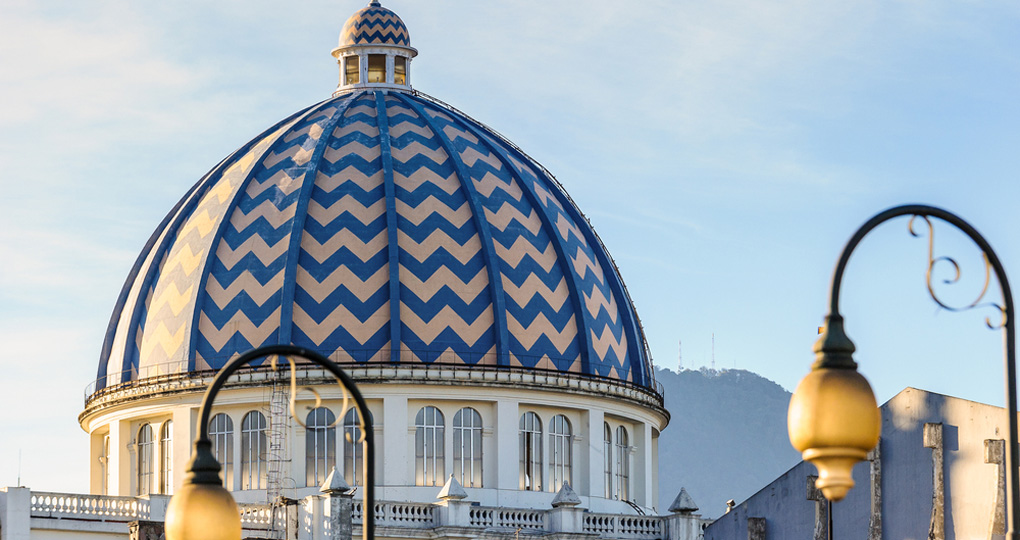
Major Airports
El Salvador only has one airport: El Salvador International Airport Saint Oscar Arnulfo Romero y Galdámez, which is located in the country's south-central region in the town of San Luis Talpa. This airport also serves as the primary gateway for the Americas.
Major Air Routes from the United States
In the United States, many airlines have direct flights year round and seasonal to San Salvador from New York, Dallas, Los Angeles, Miami, Houston, Washington, Atlanta, San Francisco, Fort Lauderdale, and Baltimore.
Major Air Routes from Canada
In Canada, Air Canada and Avianca are the only airlines that have direct flights from Toronto. Throughout the rest of Canada, travellers will have to connect via the United States or Toronto.
Essential Sights in El Salvador
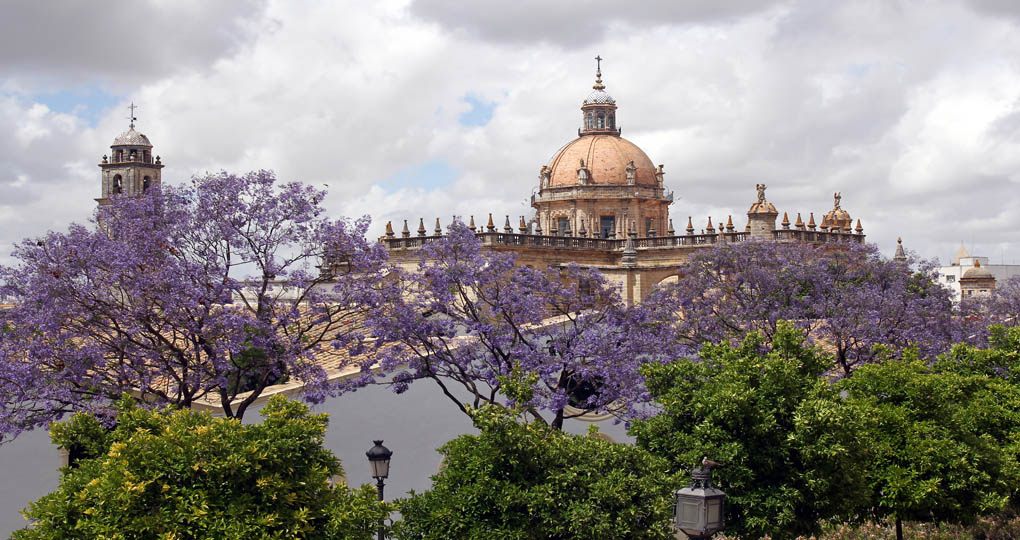
San Salvador
San Salvador is the capital city of El Salvador with a population of 1.8 million and contains several interesting landmarks such as the National Palace, Metropolitan Cathedral, Rosario Church, and the National Theatre, with its grand hall considered one of the most beautiful in the region and the oldest in Central America. There are also several shopping malls, craft markets, and special entertainment areas around San Salvador such as La Gran Via, Zona Rosa, and Paseo el Carmen. You can also enjoy the breathtaking view of the city in places like Planes de Renderos.
El Imposible National Park
Located in the state of Ahuachapan in the west of the country, El Imposible National Park stretches over 5,000ha and has an altitude ranging from 250m–1425m/820ft–4675ft. Established in 1989, it’s an endangered tropical dry forest (or tropical mountain forest) that includes the country's largest number of animal and plant species, with 500 different species of tree, 500 butterfly species, 30 species of large-sized mammals, 270 species of migratory birds, and 13 fish species across the park’s seven rivers.
Volcanoes National Park
Located an hour from San Salvador, this UNESCO Biosphere Reserve is a protected natural area containing the volcanoes Izalco, Santa Ana (Ilamatepec), and Cerro Verde. Izalco is one of the youngest volcanoes in Latin America while Santa Ana is much older. Both are still active with frequent fumaroles, but no current lava flows. Cerro Verde, located between the two volcanoes, is an extinct volcano with an eroded carter that is covered by a cloud forest. Activities in the park include an incredible walk around the Cerro Verde or climbing the summit of Santa Ana, which is one of the tallest volcanoes in the country.
The Flower Route
The Flower Route (Rutas de las Flores) is a coffee plantation area in the country’s west that contains the towns of Nahuizalco, Juayua, Apaneca, and Ataco. Its name comes from the beautiful wildflowers that bloom along the road between each town, which are best seen between November to February. The area provides stunning views of mountains and volcanoes, craft markets, coffee tours, vibrant neighbourhoods, and plenty of opportunities for adventure such as a hike to seven waterfalls. If visiting during the coffee season (December to March) coffee plantations provide tours where travellers can pick coffee beans and learn about the coffee growing process.
Other Highlights of El Salvador Off the Beaten Path
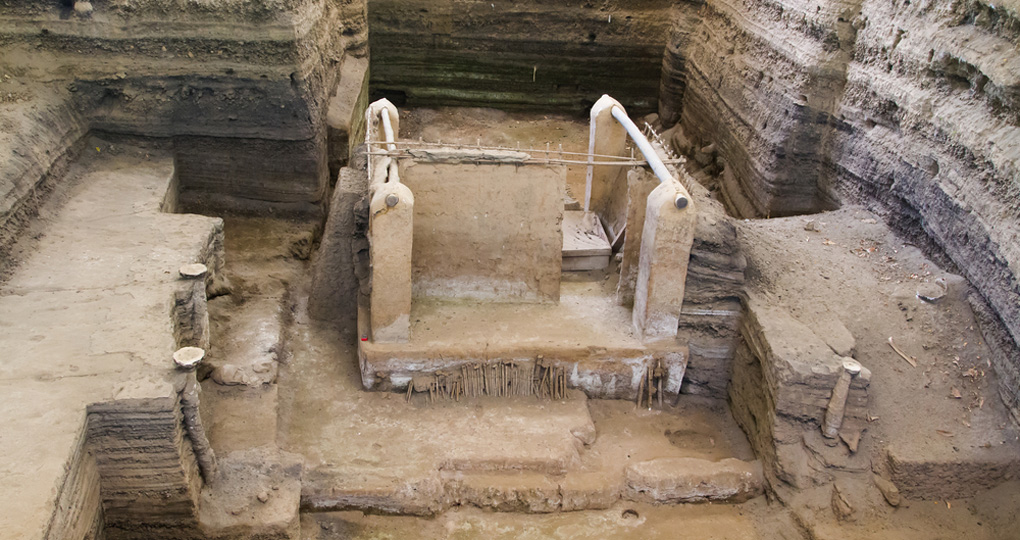
La Libertad
La Libertad, considered El Salvador’s surf capital, is located about 30 minutes outside San Salvador. Travellers can visit the El Puerto de La Libertad (The Pier), which is a popular tourist attraction that includes farmers markets with an abundance of fresh seafood, crafts made by local artisans, and plenty of restaurants. In El Tunco you will find an exuberant nightlife with a number of coffee houses, bars, and clubs frequented by travellers and surfers. El Salvador is also known as the "Paradise of the Right Waves," and is famous for its beautiful beaches with strong surfs such as the Punta Roca Break or El Tunco Beach.
Joya de Cerén
Discovered in 1976, Joya de Cerén is a Maya farming community that was buried by the eruption of the Lomo Caldera Volcano around 600 AD. It’s a well-preserved archaeological site (similar to Pompeii in Italy) that provides a time capsule of how the Maya people lived, with their architecture and artifacts remaining intact and in their original positions. Travellers can explore the site of approximately 18 structures of which 10 have been excavated, revealing passages and homes built of white soil, clay, and mud. The site also offers a comprehensive museum that illustrates the site´s history and displays a variety of pottery, household goods, and cereal seeds that have been found.
Suchitoto Colonial Town
Located in the mountains of Cuscatlán and overlooking Lago Suchitlan, Suchitoto is an amazing town with cobblestones streets and colonial buildings. One of the highlights of this charming town is Santa Lucia Church, which was built in the mid-1800s and is famous for its beautiful colonial architecture. The Centro Arte Para la Paz (Art Centre for Peace) is another highlight. It features a museum, art gallery, and gardens in a former convent.
Montecristo National Park
Montecristo National Park is a cloud forest in the northernwestern part of the country, with 4,950ac and an elevation reaching up to 2,418m/7933 ft. It features an abundance of native flora and fauna, making it a great spot for nature lovers. Lucky travellers may be fortunate enough to see the Quetzal Flamingo, one of El Salvador’s most emblematic birds. The park is also great for hiking. The trail to El Trifinio takes hikers through a cloud forest that borders Honduras and Guatemala.
Top Activities and Experiences in El Salvador
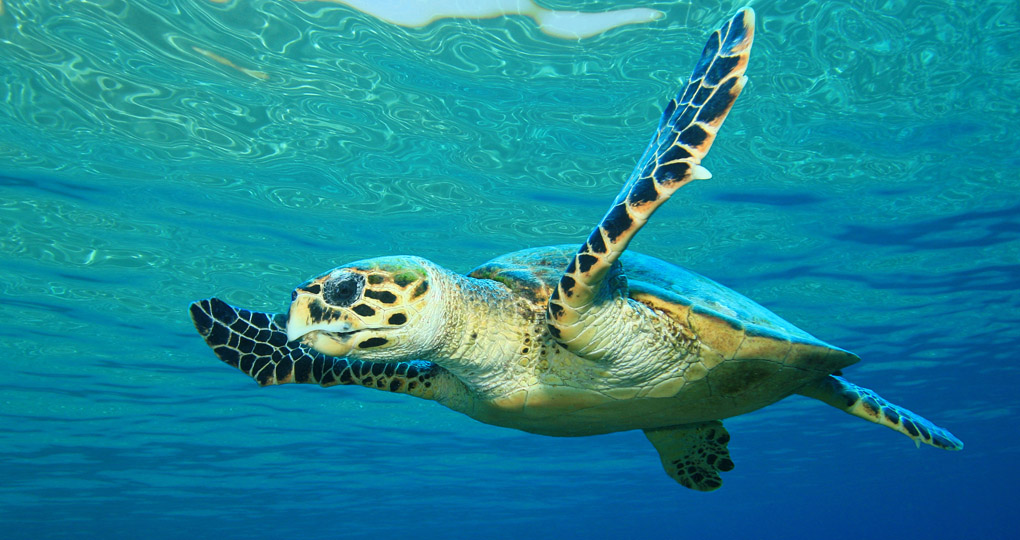
Help the Sea Turtle Release Program
El Icacal Beach is home to a sea turtle conservation program as it’s a nesting hub for four species of turtles: Carey (hawksbill sea turtle), Golfina (olive ridley sea turtle), Prieta (green sea turtle), and Baule (leather black sea turtle). The nesting season runs from late May until December. After the eggs are laid, they are then transferred to a man made nesting area for their protection. It takes 45 days for the eggs to hatch between August and January. The conservation program is open year round, but it’s best to visit during the hatching season when visitors can assist in releasing the newly hatched turtles.
Go Surfing
El Salvador is a popular surfing destination, with great surf spots such as Sunzal, Las Flores, and La Libertad. Due to its location on the Pacific Ocean, El Salvador has a variety of beaches ideal for all levels of surfers. It has an abundance of world-class left and right point breaks and consistent surfing conditions, with the best swells found during March to October, when waves can reach up to 3.5m/12ft.
Hiking Volcanoes
Volcanoes National Park is a hiker’s wonderland where you can hike multiple volcanoes and explore the natural beauty of the park. You can hike around the Cerro Verde Crater that offers spectacular views of the volcanoes Izalco and Santa Ana and Coatepeque Lake, considered one of the world's most beautiful lakes. You can also climb the summit of Santa Ana, one of the tallest volcanoes in the country, and feel the heat of its enormous boiling crater lake.
Essential El Salvadoran Foods to Try
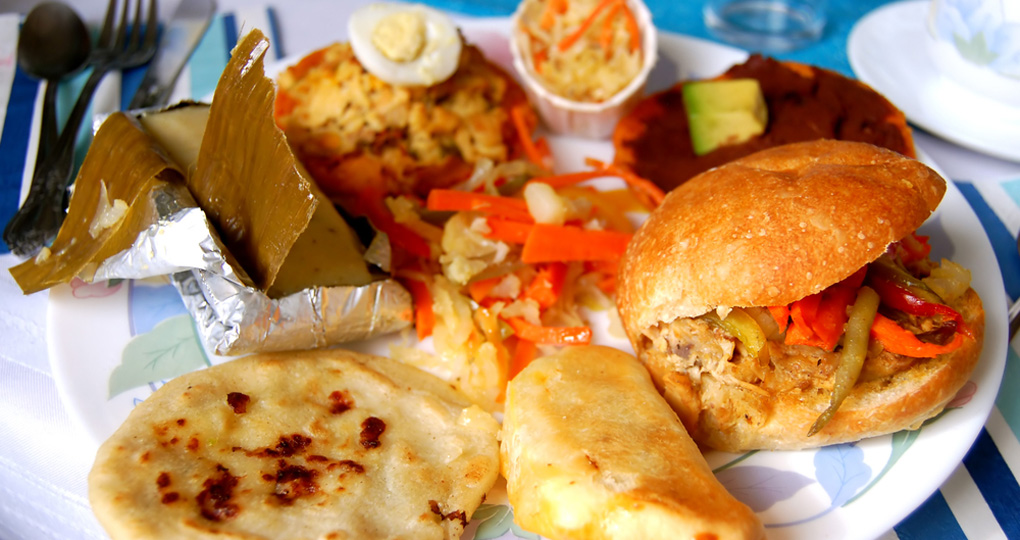
Pupusa
The pupusa is considered the national dish of El Salvador. It can be found everywhere from street food stalls to high-end restaurants. This delicious dish consists of a thick handmade corn tortilla filled with a variety of ingredients such as cheese, chicharrón (fried pork made into a paste), beef, chicken, refried beans, and vegetables such as squash. It is commonly served alongside pickled cabbage slaw known as curtido and a salsa roja (tomato sauce).
Sopa de Gallina India
This traditional Salvadoran soup gets its name from its main ingredient, a free-range home-grown chicken that is referred to as a “gallina india.” This type of chicken gives the soup a uniquely rich flavor along with ingredients including tomatoes, onion, garlic, green chilli, potato, carrot, cilantro, and mint. It’s typically served along with a bowl of rice. You can also find variations throughout the country that include meatballs, eggs, peppers, and corn.
Sopa de Pata
This wholesome soup is made with a variety of ingredients including the one it gets its name from: cow’s feet. The feet are cleaned with lemon juice then boiled to make a rich hearty broth. The soup includes beef, tripe, cassava, sweet corn, squash, plantains, and green beans, and is then seasoned with coriander leaves, lemon, chili powder, and cumin. It’s great for colder evenings and considered good for helping you heal from the common cold due to its rich nutrients.
Atol de Elote
Atole de elote is a typical Salvadoran drink with roots dating back to the Mayan period. This creamy sweet corn drink is made with freshly ground corn kernels, milk, cinnamon, and sugar and served hot. It’s frequently found at food stalls throughout the country and served with a sweet bun for dunking.
Tips for Sustainable Travel
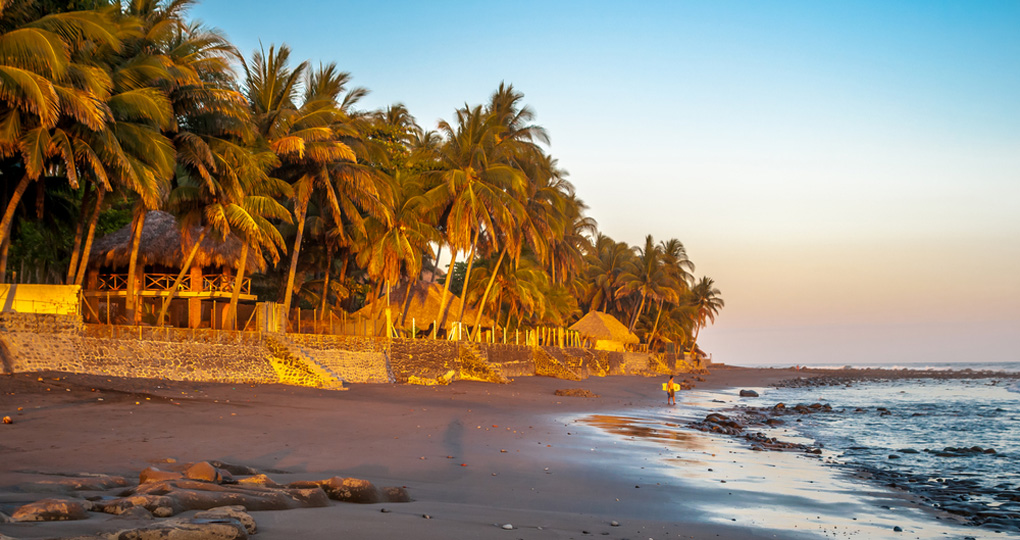
El Salvador is a country of immense natural wealth so book with tour operators who are dedicated to sustainable travel and are committed to responsible and ethical practices. When visiting jungles and beaches, do your part by trying to avoid contaminating these delicate environments. Do not litter with plastic bottles or any other type of object that could damage the area. Try travelling with items that are reusable such as using reusable straws, refillable water bottles, or, even better, a water bottle with its own filtration system. Avoid plastic bags or goods packaged in plastic to minimize waste. Rest peacefully and stay in eco-lodges and hotels when possible as they focus on providing sustainable accommodations that reduce the impact on the local environment and the locals living there. Do not purchase products derived from protected or unprotected animal species, including items made with tortoiseshell and feathers.
Where to Go Next
El Salvador is ideal to combine with other Central American countries. By land, you can visit the ruins of Copan in Honduras, which is four hours from San Salvador. You can also visit the Roatan Islands in Honduras with their beautiful beaches, which are 50 minutes away by plane. Belize is also an excellent option as it’s 50 minutes away while Costa Rica is just one hour away by plane. Travel to Nicaragua crossing the Gulf of Fonseca by boat and end your trip in Leon, a beautiful colonial city and gateway to the beautiful Momotombo Volcano. You can also finish your trip in Guatemala and visit the spectacular Tikal National Park where you can explore Mayan ruins.
Most Popular Itineraries for El Salvador
Colours of El Salvador offers 7-days visiting some of the most essential sites in El Salvador, including the Rutas de Flores, the colonial town of Suchitoto, Joya de Cerén, and Volcanoes National Park. Highlights of San Salvador is a 3-day city tour exploring important sites such as the National Palace and Metropolitan Cathedral along with various local craft markets. World of Maya: San Salvador to Guatemala is a 10-day journey exploring volcanoes, Joya de Cerén, Suchitoto, and the charming towns along the Rutas de Flores before crossing borders to Guatemala and Honduras to explore the wonders of the Mayan Civilization.
19 Aug 2020, 6:16 p.m.


